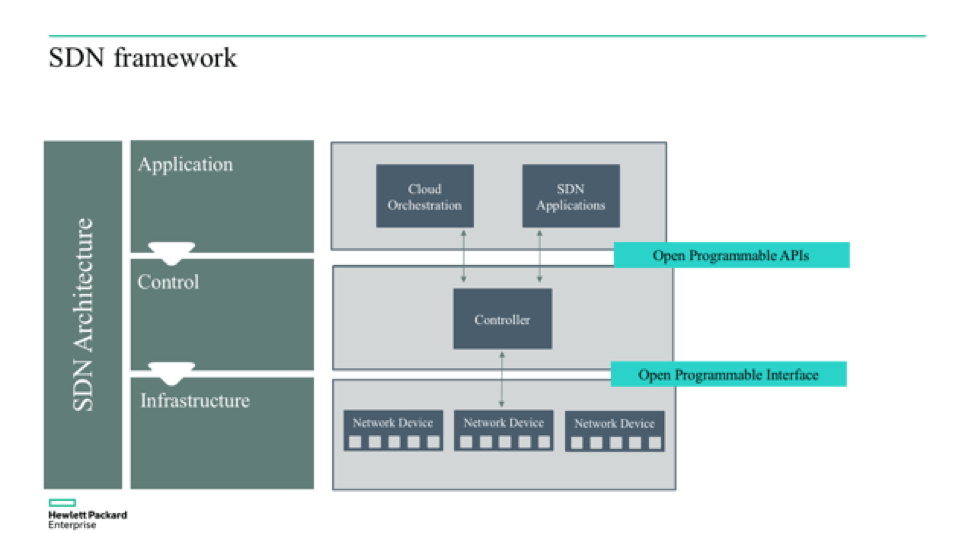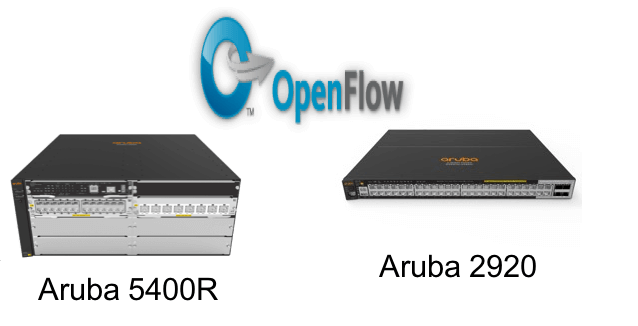In the first blog of my SDN 101 series, we discussed why SDN is becoming more prevalent in today's digital era. Now we will take a deeper look into what SDN is and its three main building blocks: SDN infrastructure, controller, and applications.
What does SDN really mean and why should I care?
You remember how provisioning and rolling out a new application in a traditional network was so manual, error-prone and complex? The SDN architecture separates the network control plane from the forwarding/data plane in the hardware. Control—essentially the brains of the network—is centralized, while forwarding—remains distributed. So by centralizing the controller and your intelligence, you can bring in programmability to your network to dynamically change how your network responds to business needs.
The SDN solution has three building blocks; SDN Controller, SDN infrastructure, and SDN applications. Let's see what each component really does.

SDN Controller: The brain of the SDN architecture
The SDN controller commands information to the switches via OpenFlow protocol - which is considered one of the first SDN standards. The HPE Virtual Application Network (VAN) SDN controller, the brains of the SDN network, delivers tight integration between the network and business system, with open, programmable interfaces that enable the orchestration of applications and automation of network functions.
The fundamental extensibility of open APIs of the HPE SDN Controller will allow innovative new applications to be created that make requests of the underlying network, without the need to physically reconfigure the infrastructure.
SDN Infrastructure: Easy migration plan to SDN
The network infrastructure in an SDN solution is abstracted from applications and network services while the controller becomes more programmable. The HPE SDN Controller uses OpenFlow to configure, manage, secure and optimize network resources dynamically. To ease adoption for SDN, HPE has more than 50 OpenFlow-enabled switches and more than 30million ports deployed.
Customers often ask once they go to all SDN architecture could they go back to traditional networking? Or if they need to equip their entire network with an SDN-enabled infrastructure to reap the benefits from SDN. And along that line is whether they can implement SDN in a multivendor environment?
You don't need to transition your entire network to SDN to see tangible benefits. HPE's SDN strategy is to make your migration to SDN as easy as possible. Our SDN-enabled switches (OpenFlow-enabled) support hybrid mode of operation where responsibility for certain labor-intensive functions, such as Quality of Service (QoS) or security, can be passed to the SDN controller. Other functions, such as traditional routing functions, can be handled by the normal traditional data plane. Also, you only need to deploy OpenFlow-enabled switches at the edge of the network for HPE SDN applications- while keeping the core of the network intact.
HPE has 50 OpenFlow-enabled Switches.

SDN Applications: A new era of SDN innovations
SDN applications are analogous to the protocols that run on legacy networks, but SDN applications provide a true end-to-end service level for network performance, quality of service, and security, which can be tuned to applications' needs. For example, SDN applications can provision the network, inspect flows or apply quality of service to specific business applications. HPE SDN applications use open northbound APIs to apply network services to the infrastructure via the controller. HPE SDN applications enhance security, optimization, and visibility of the network.
HPE's commitment to using open standard architecture technologies is valued by customers. "We wanted an SDN solution based on open standards," de Boer from Deltion College explains. "One of the most compelling advantages of SDN is its flexibility. We want to take advantage of future SDN developments, without being locked into a single vendor's proprietary architecture. HPE SDN met this requirement."[1]
Wondering what SDN Applications are available today or what they can do to help with your network performance, security, and visibility? Stay tuned on the Airheads forum for next month's blog that will dig into SDN applications and their benefits.
[1] http://www8.hp.com/h20195/v2/GetDocument.aspx?docname=4AA5-7327ENW
Newsha Sharifzadeh is a global product marketing manager at Aruba, a Hewlett Packard Enterprise company. She has an MBA in entrepreneurship and marketing from Santa Clara University and bachelors in Electrical Engineering.




